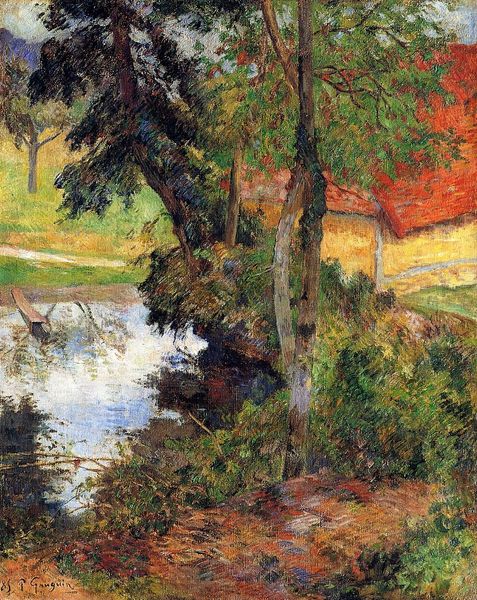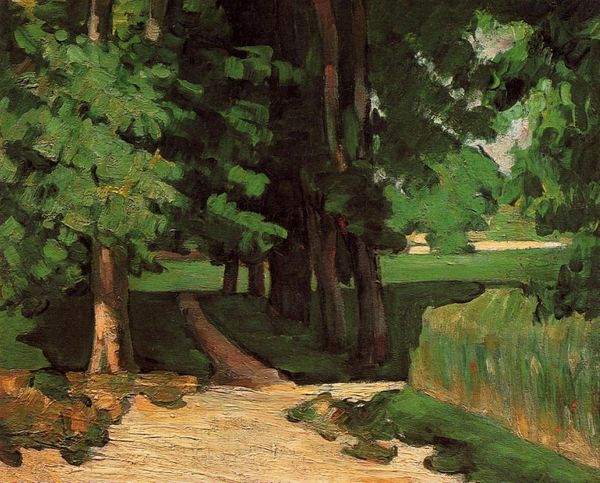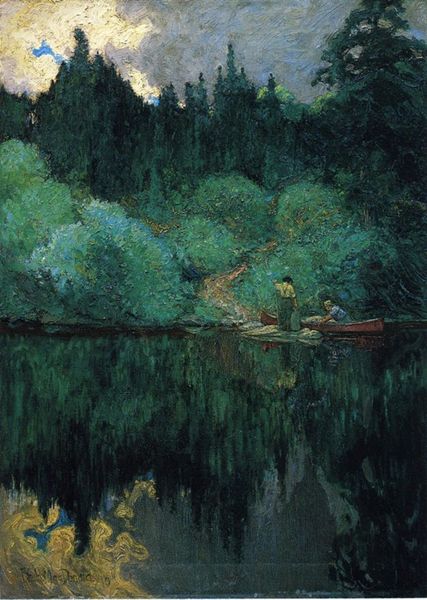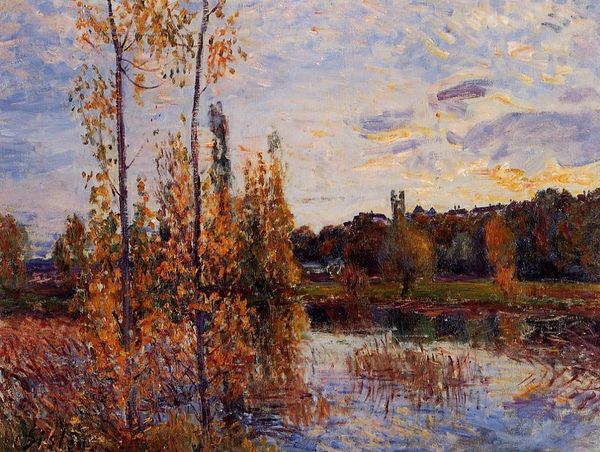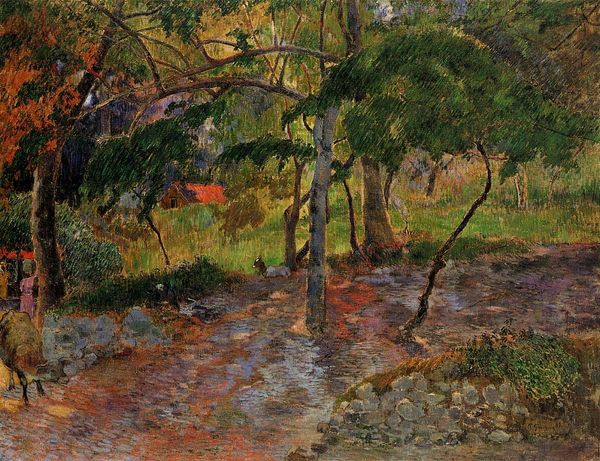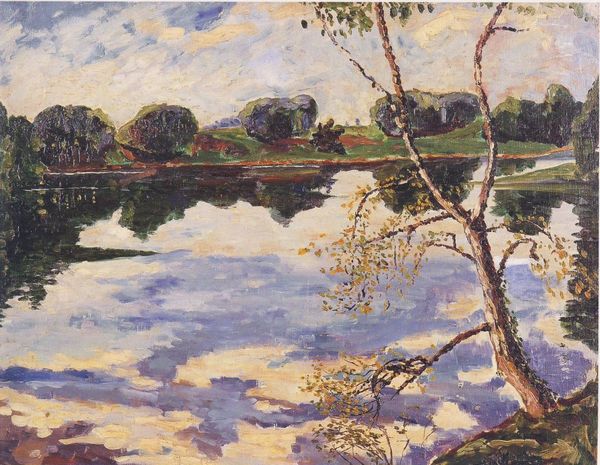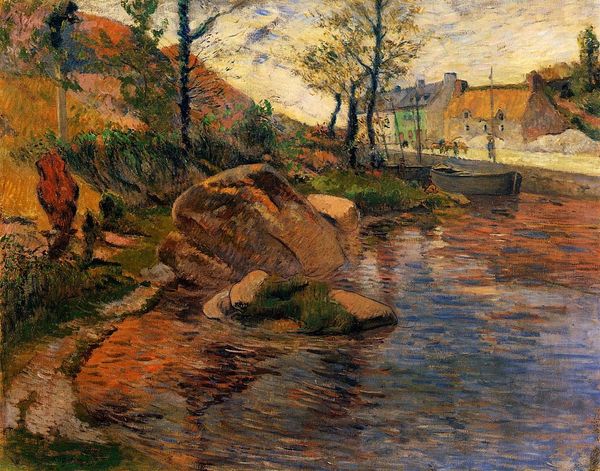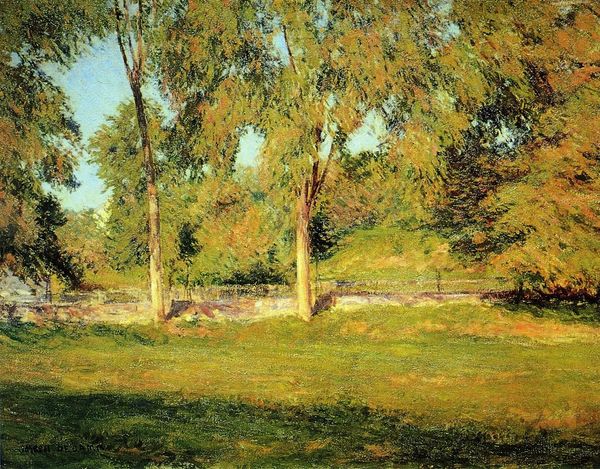
Copyright: Public domain
Curator: This is Nicholas Roerich’s “The Fading Day,” painted in 1902. You’ll notice it’s rendered in oil paint, capturing a poignant scene en plein air. Editor: Immediately, I get a sense of stillness. The water, the lone figure in the boat…it's all so hushed and contemplative. There's this wonderful melancholic light hanging in the air. It feels very Romantic, like a memory surfacing. Curator: Roerich's artistic journey was deeply entwined with his spiritual pursuits and a strong sense of Russian identity. Consider the era: a period of introspection and artistic exploration, as Russian artists grappled with modernism while cherishing their cultural roots. He moved in The World of Art circle with Diaghilev and Benois; the emphasis there was definitely on a national romantic vision of beauty and truth. Editor: Yes, I feel that national romantic spirit. And look at the brushstrokes! So loose and expressive. He isn't aiming for photographic realism. It’s more about capturing the *feeling* of the fading day than precisely depicting the scene. Did Roerich embrace Symbolism as well? The painting seems steeped in symbolist ethos, pointing to something deeper than the immediate landscape. Curator: Absolutely. Symbolism threads through much of his work. The lone figure, for instance, can be seen as a representation of humanity's connection to nature and the passage of time – pretty common for early 20th century Russian landscape painting that leans away from overt narratives and into capturing moods, or states of mind. The reflection in the water might suggest mirroring oneself or seeking greater truths through introspective means. Editor: Beautifully put. The reflections are definitely doing something important. Almost dissolving the boundary between the earthly and…something else. It evokes the sense that there are depths to everything. Like the world has a soul you could see if you look deep enough. It's a bit like listening to very quiet music as the sun goes down. It creeps right in. Curator: And if you consider Roerich's later involvement with theosophy and his expeditions to Central Asia, this early work can be seen as a precursor to his more explicitly spiritual and philosophical paintings. His art often transcended mere representation, serving as a vehicle for deeper meaning. Editor: It definitely invites you to contemplate. Not just the scene before you, but also your own place within it. What lasts, what fades, what lingers just beneath the surface. Thank you. This visit has moved me, quite unexpectedly! Curator: My pleasure. I appreciate you seeing more than the obvious details in it, noticing all that the painting quietly expresses about the artistic, cultural, and even the inner landscapes of the time.
Comments
No comments
Be the first to comment and join the conversation on the ultimate creative platform.
